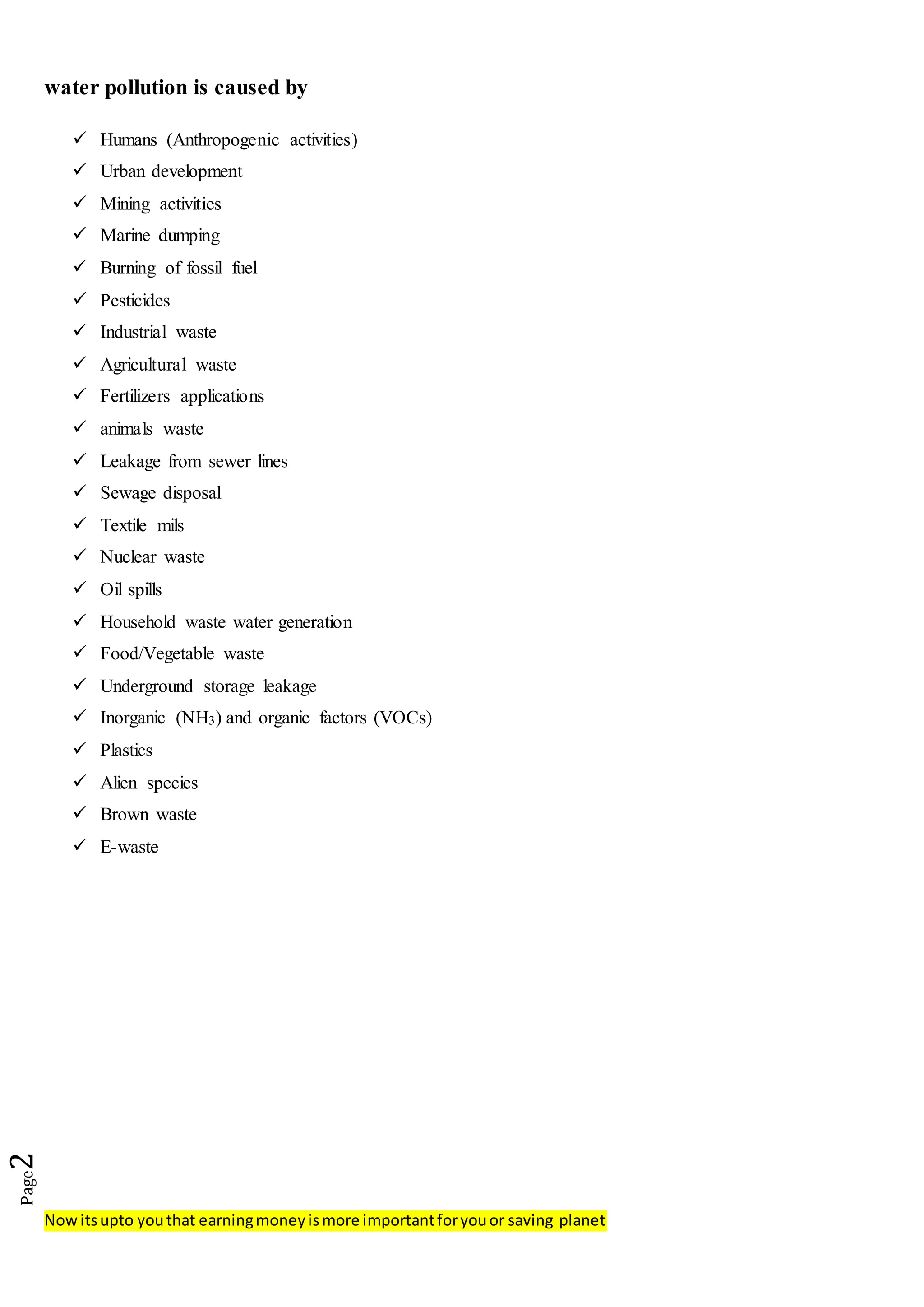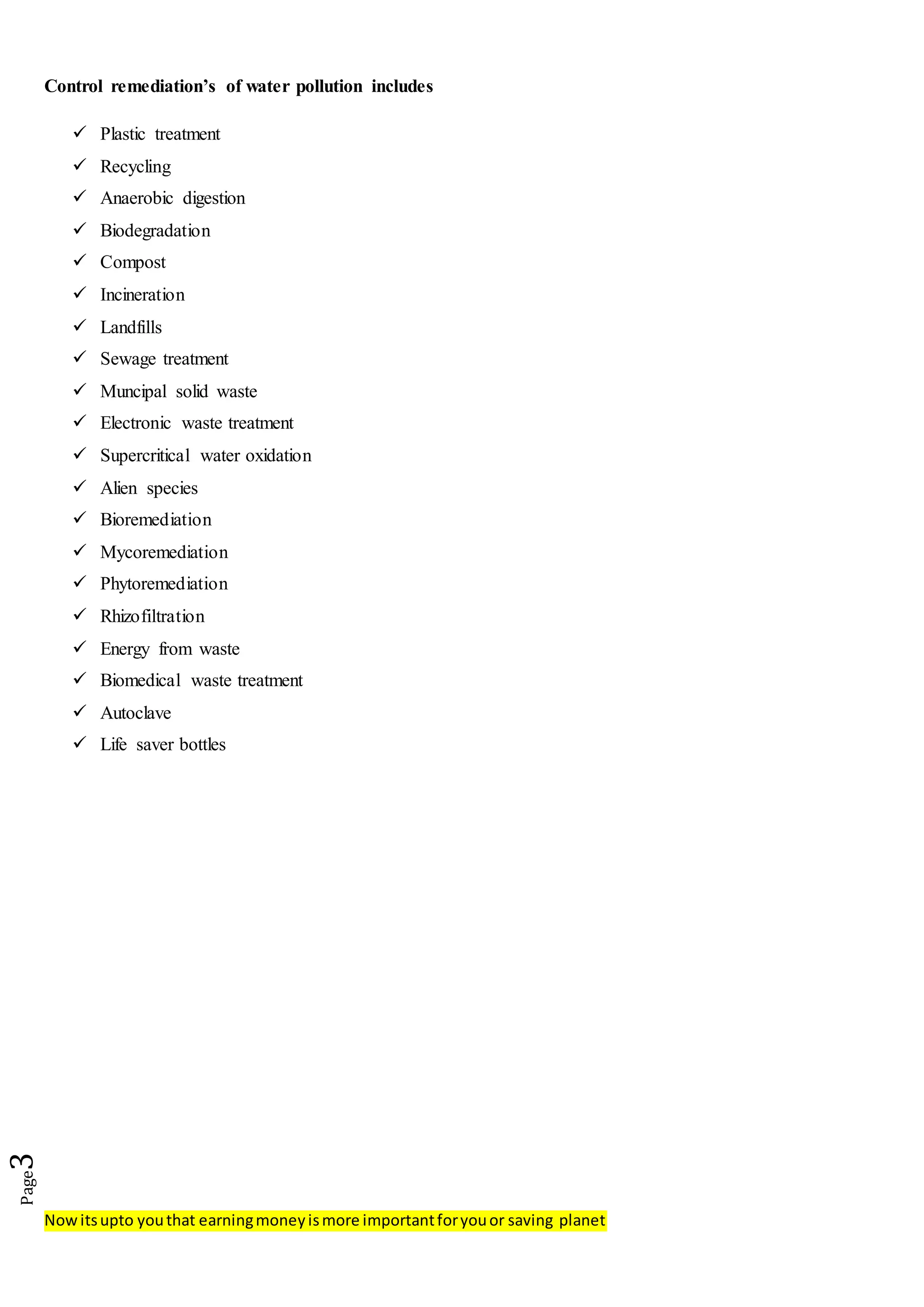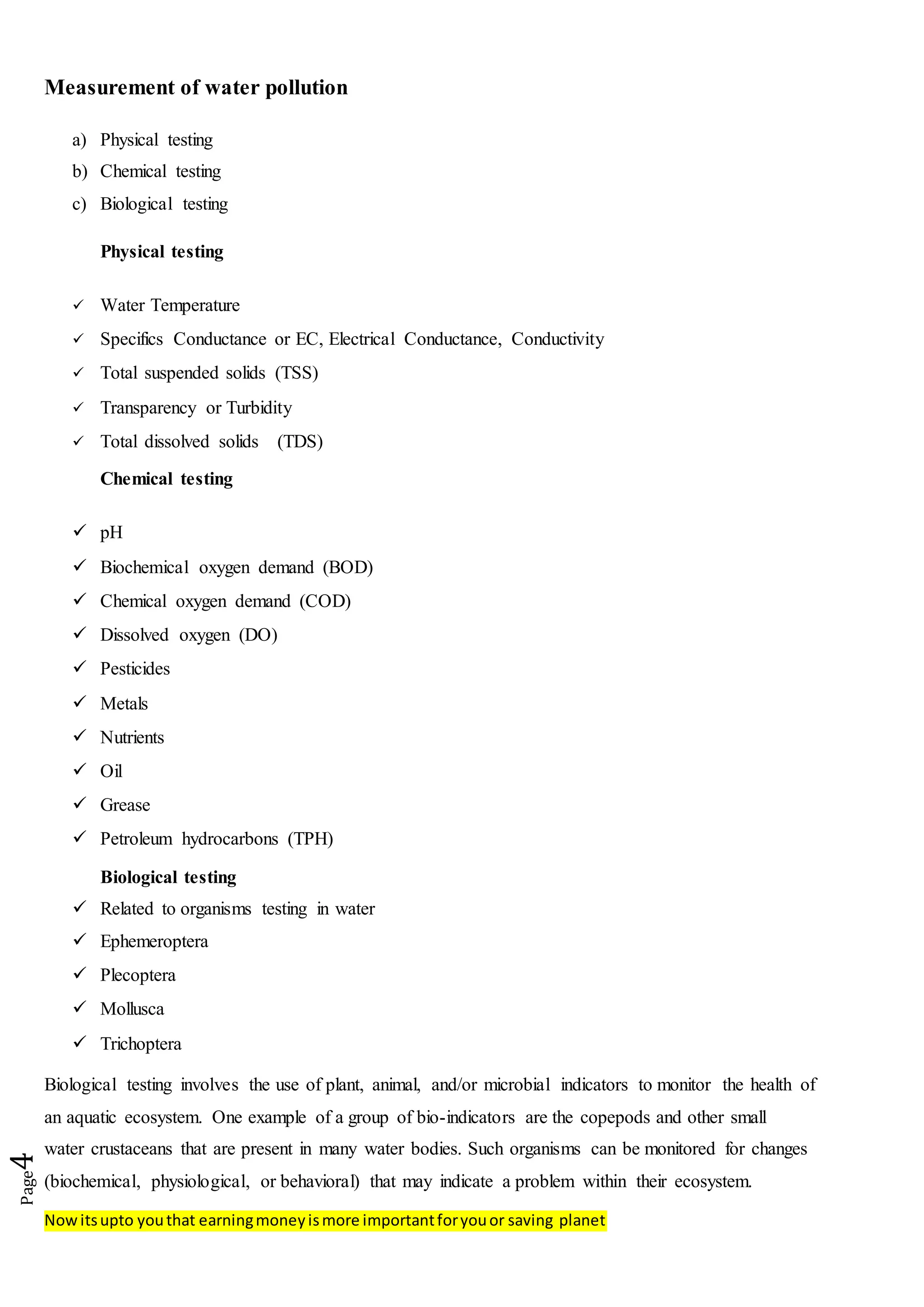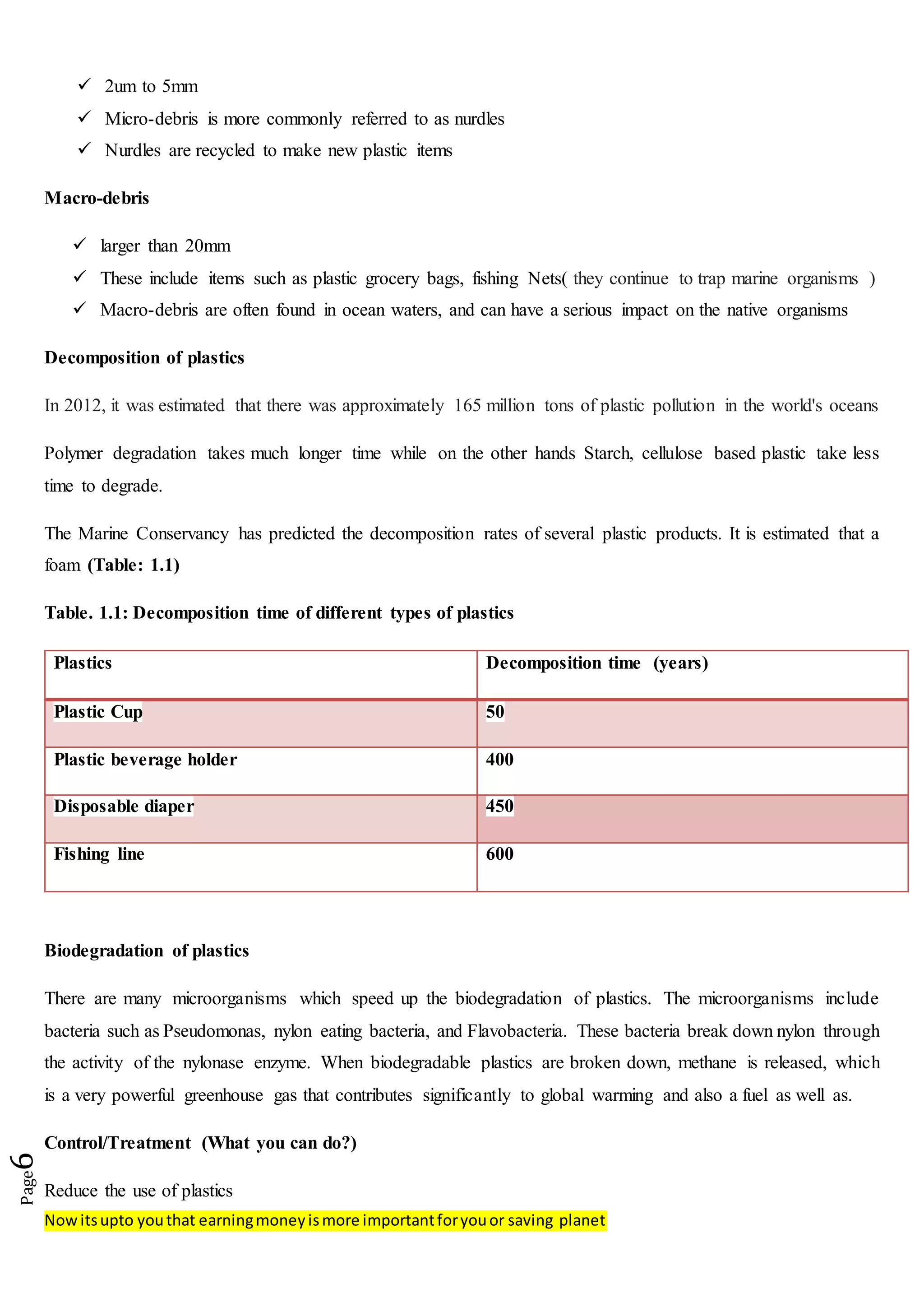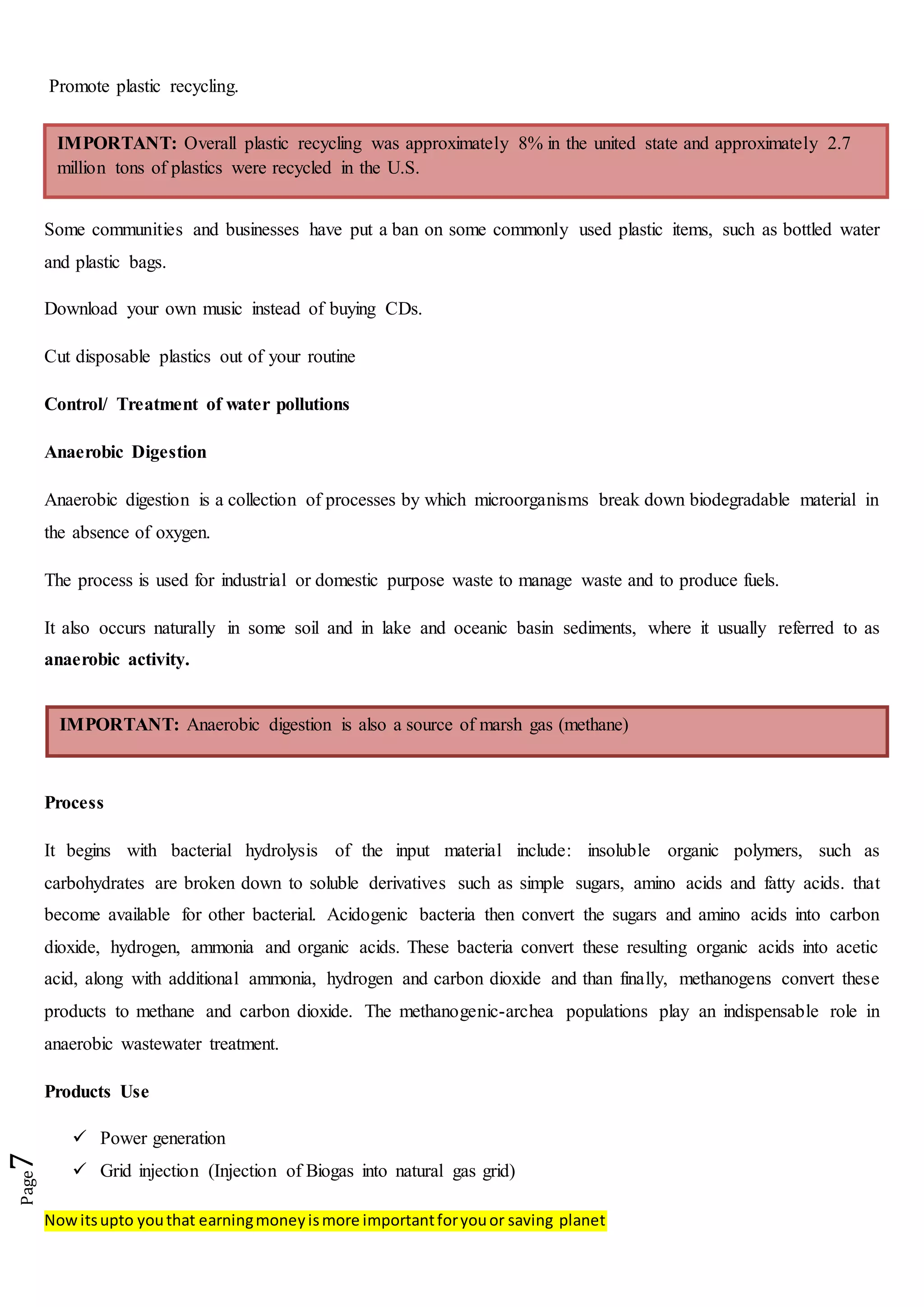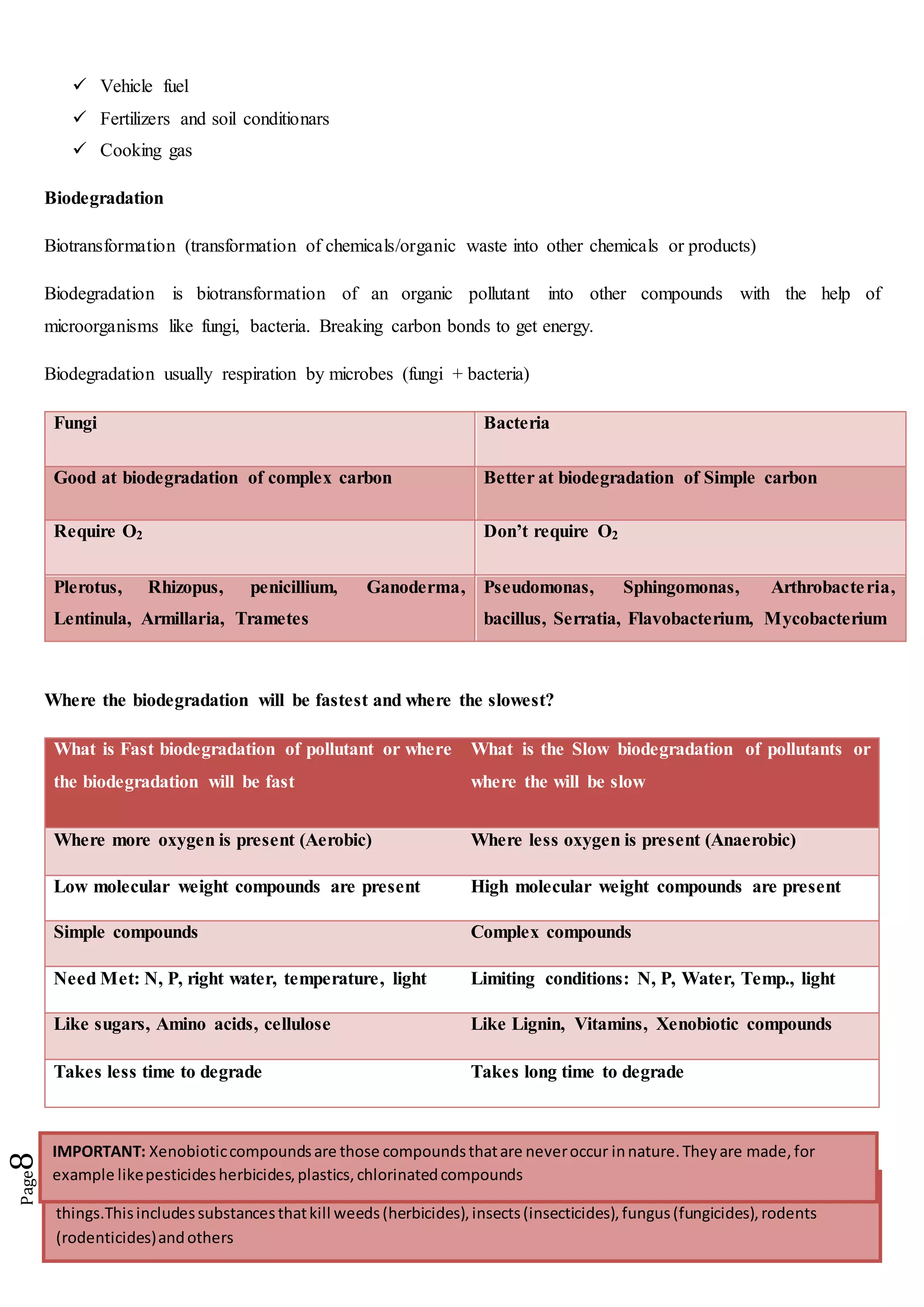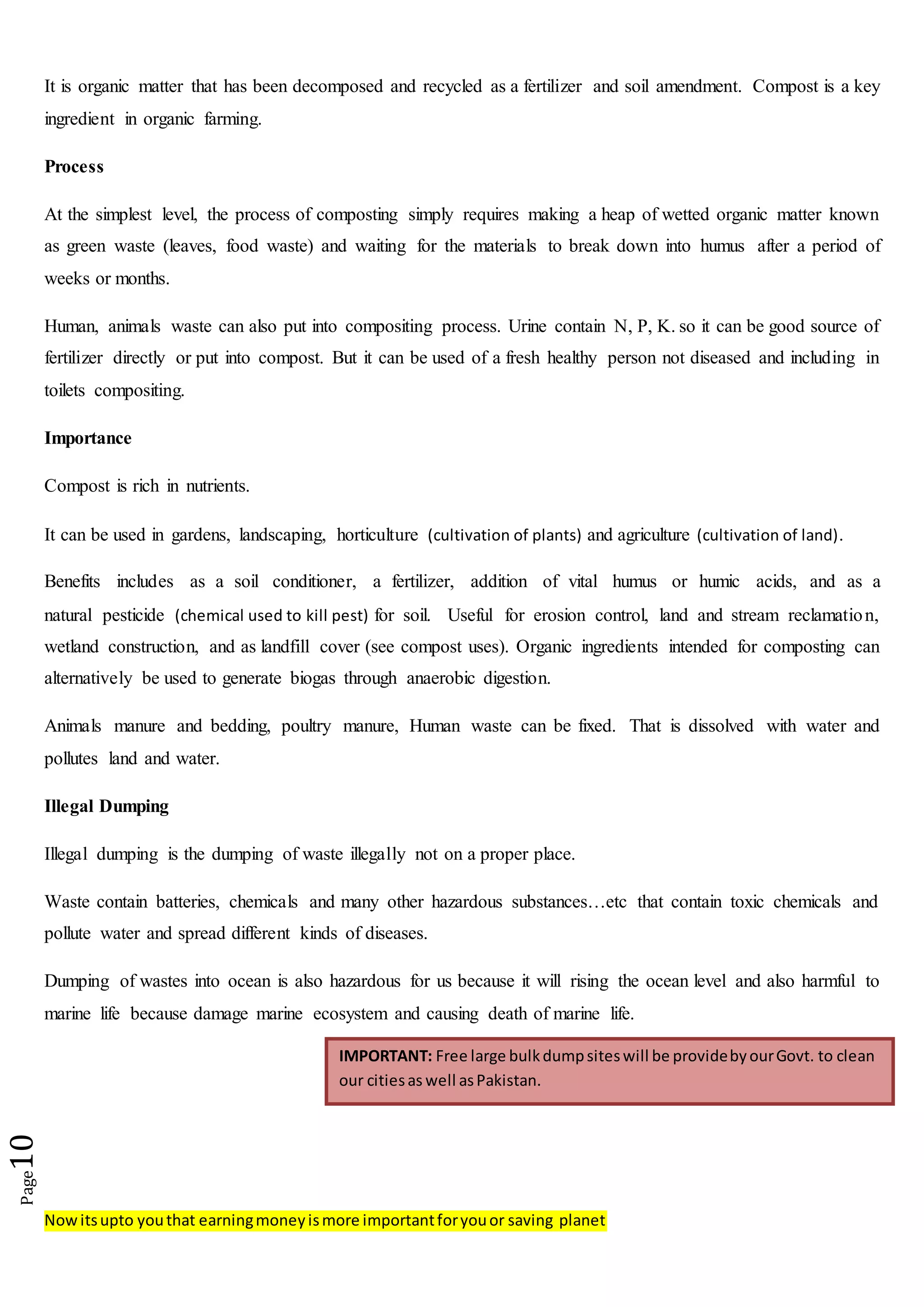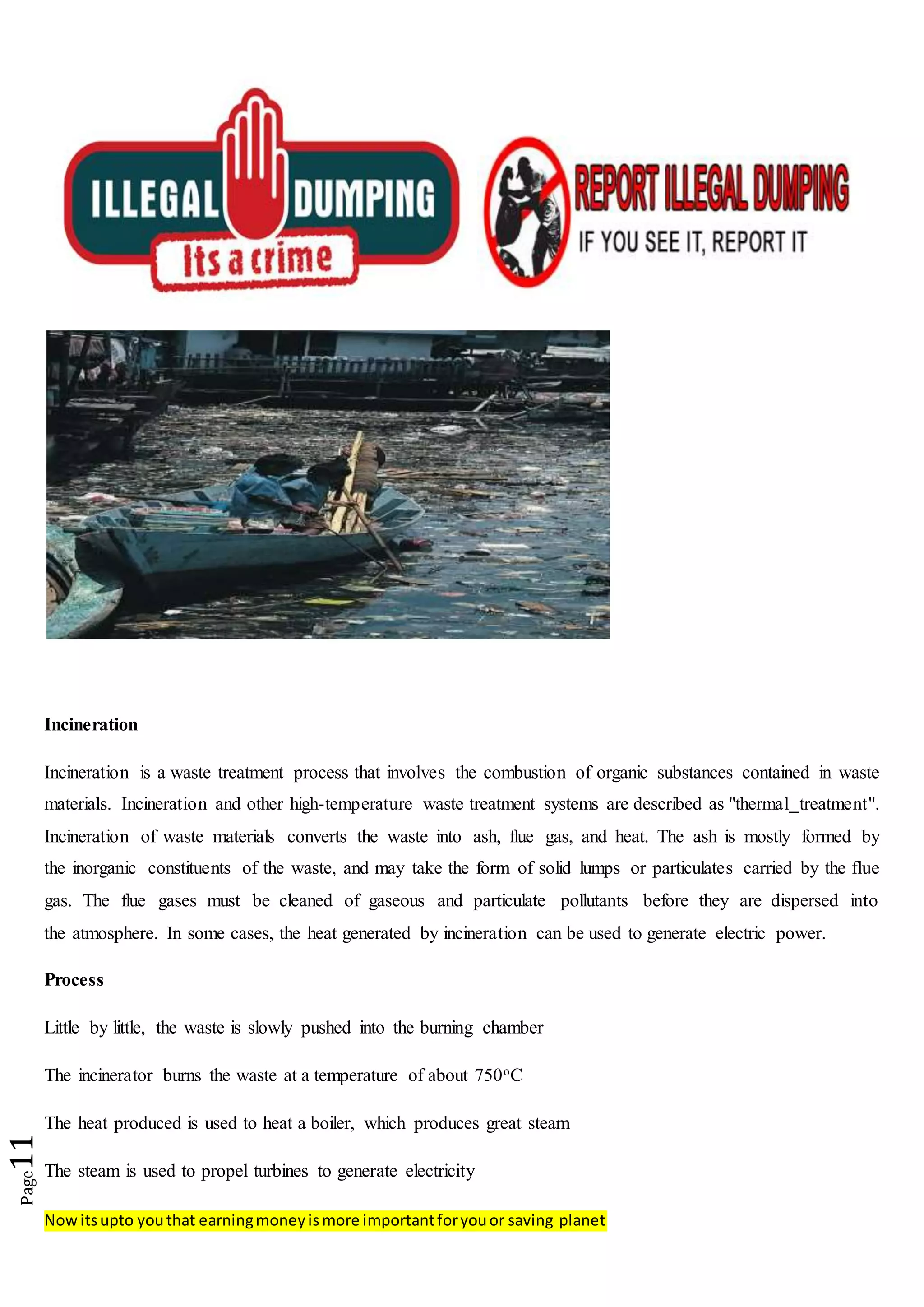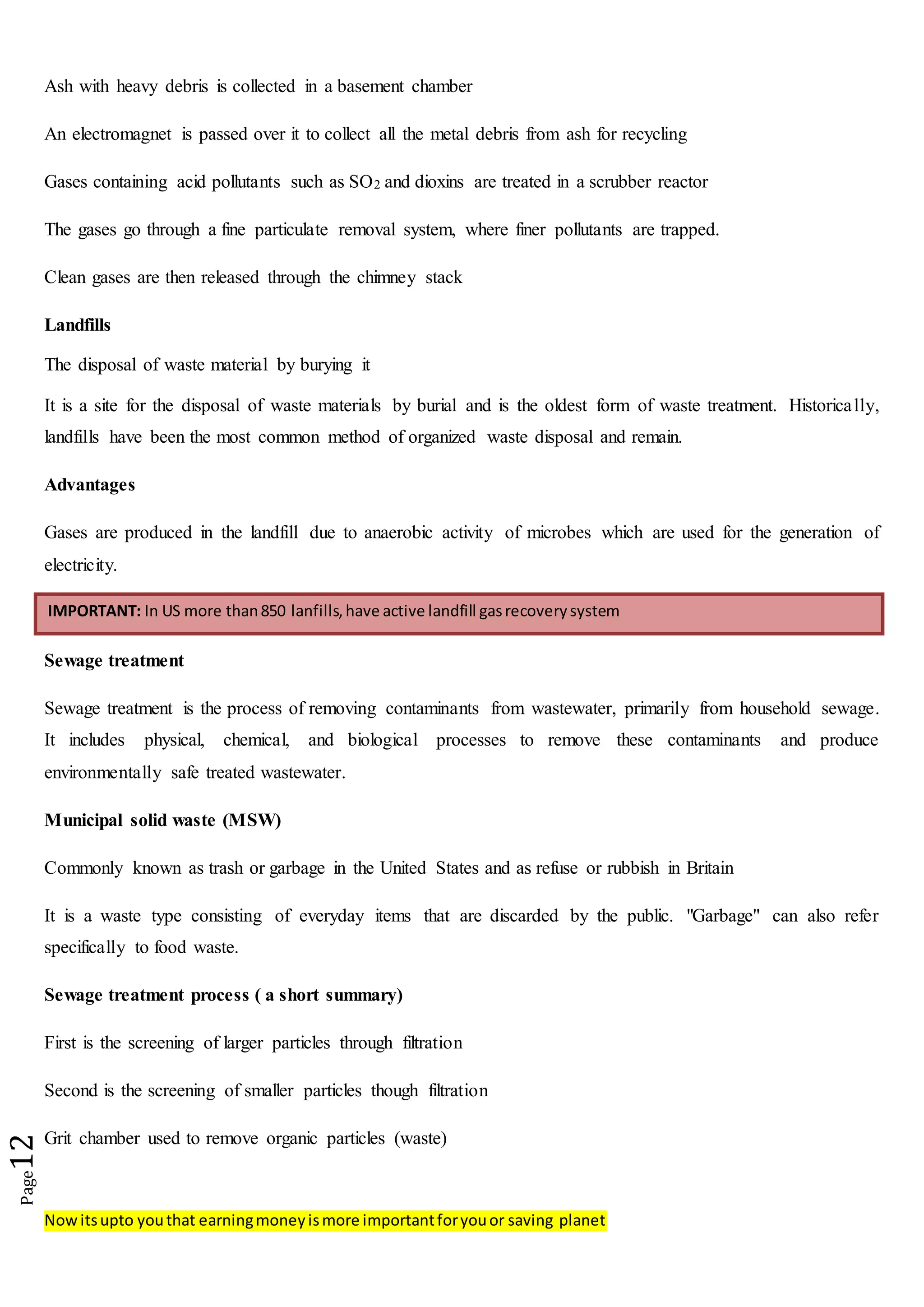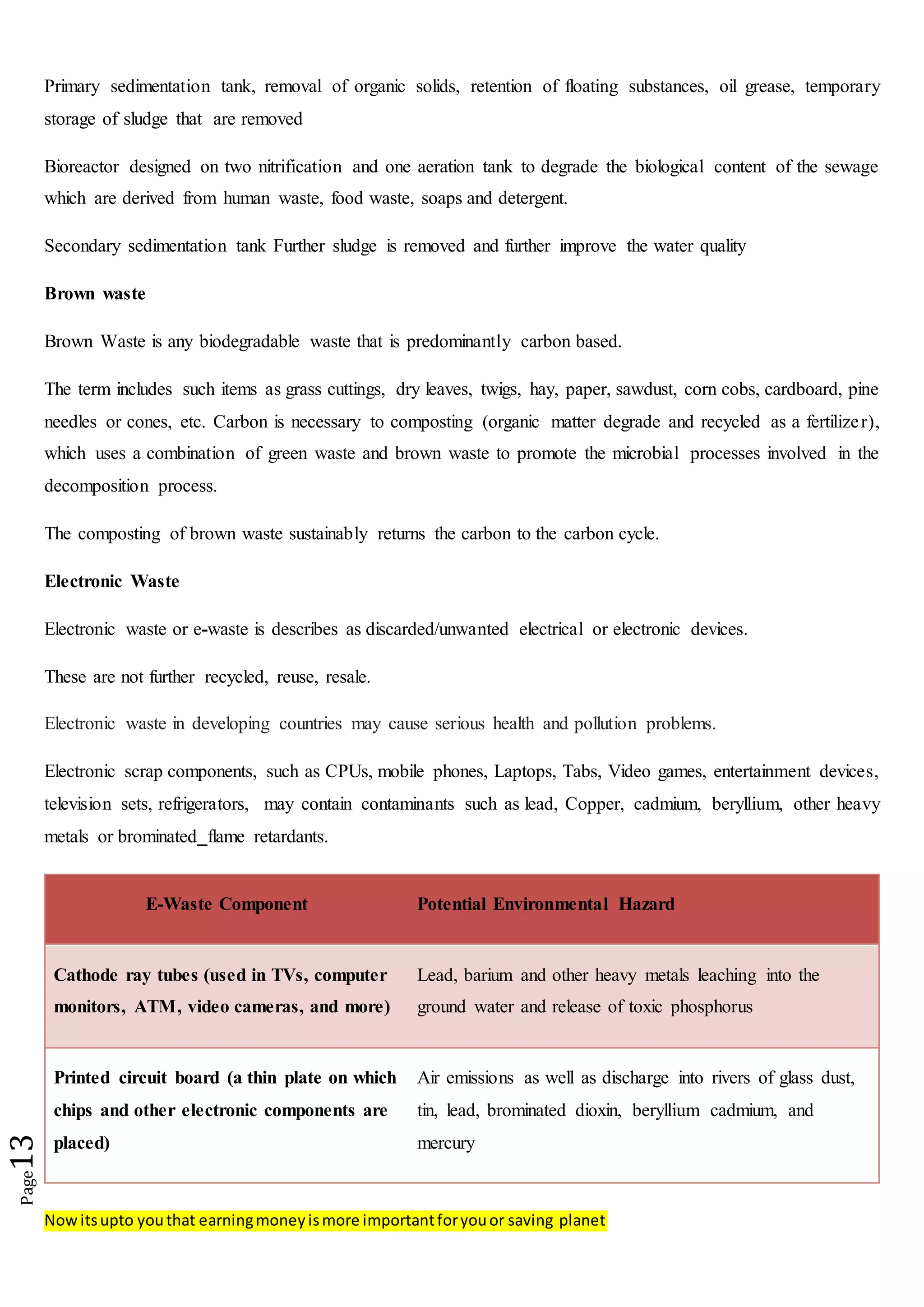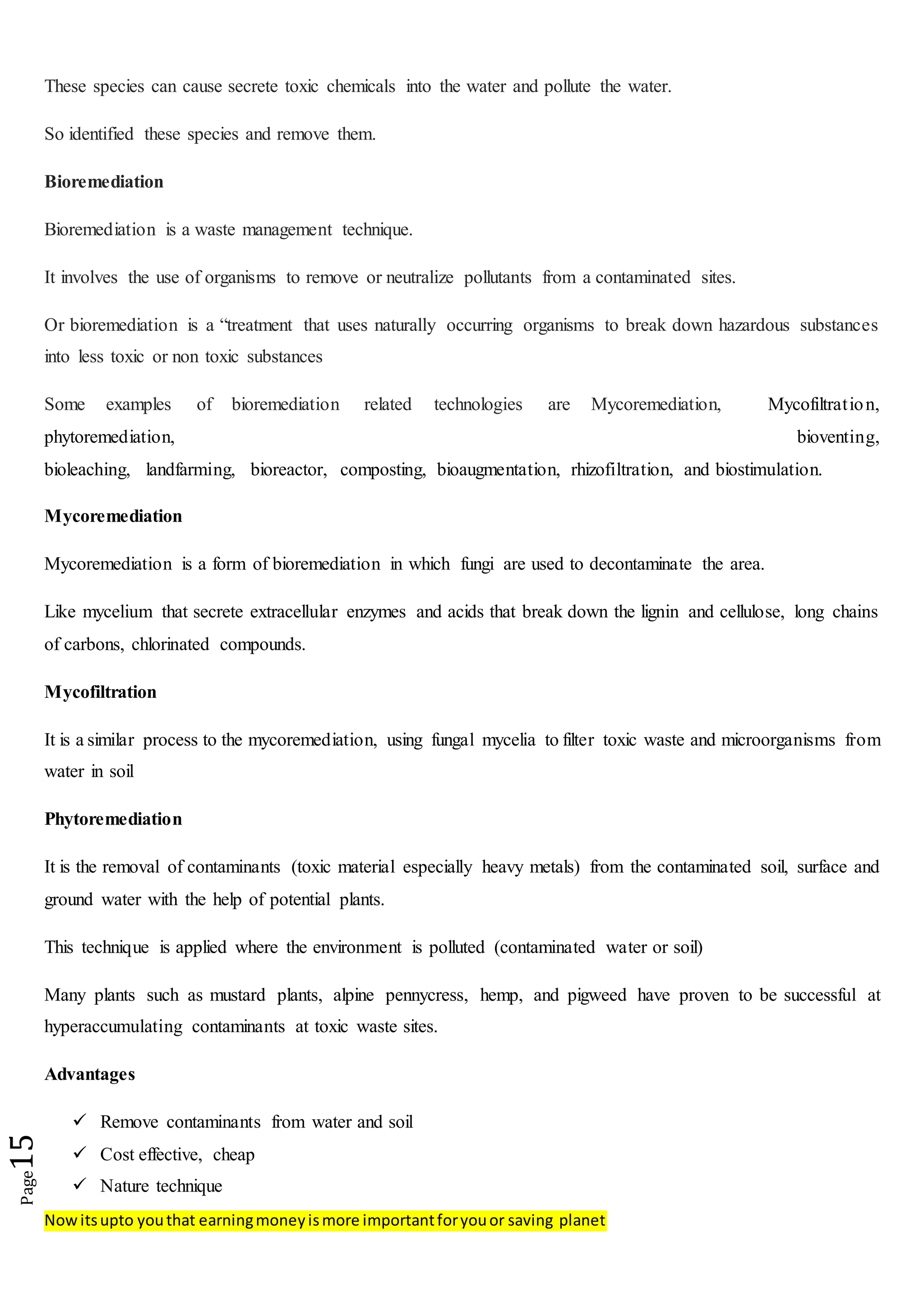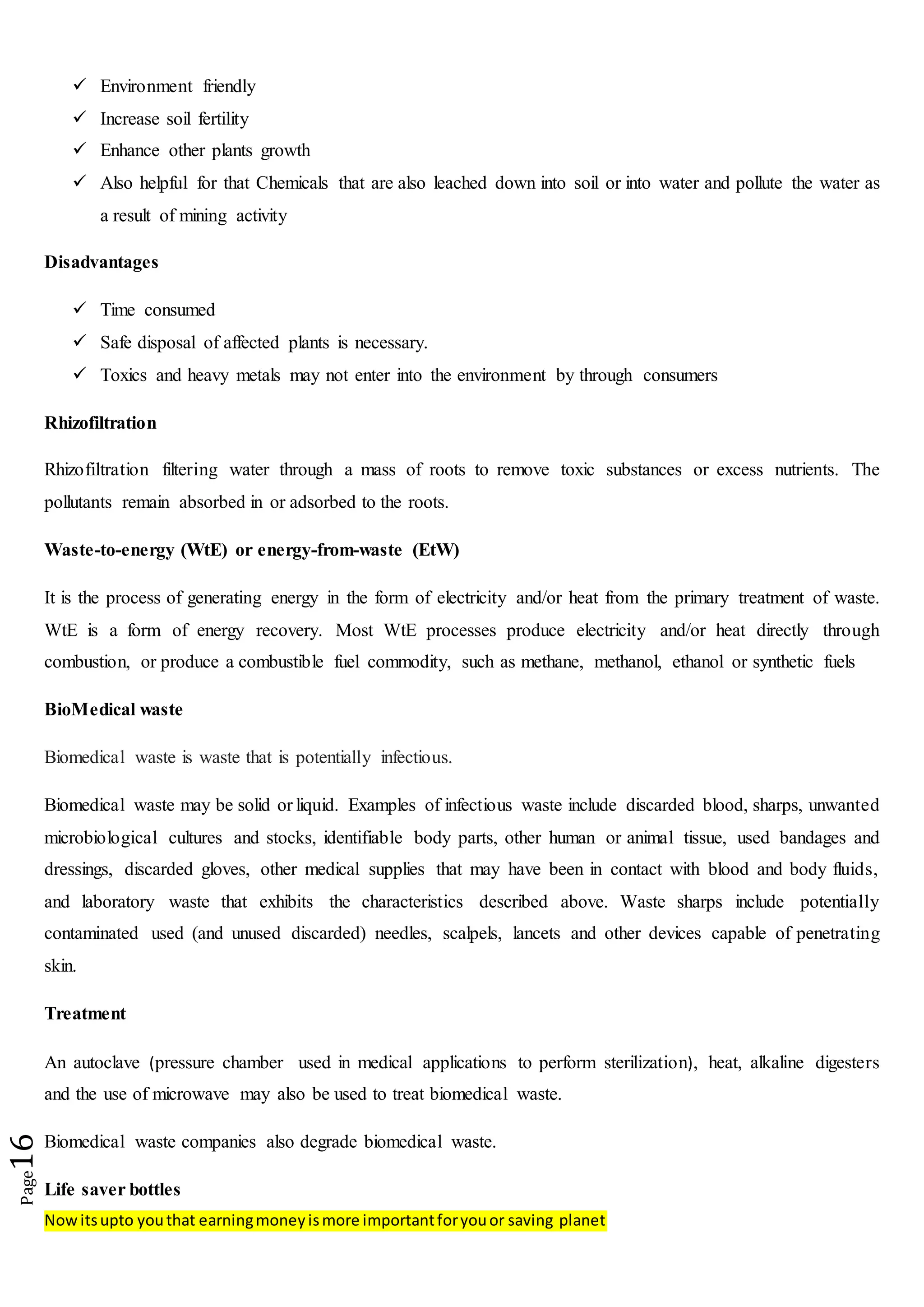This document discusses various causes and types of water pollution, methods for measuring and controlling water pollution, and waste treatment processes. It notes that water pollution is caused by many human activities like urban development, industrial and agricultural waste, as well as natural processes. Common methods for controlling water pollution include wastewater treatment, recycling, composting, incineration, and landfills. Measurement involves physical, chemical and biological testing of water samples. The document also provides details on types of waste like plastics, chemicals and how different treatment methods work.

